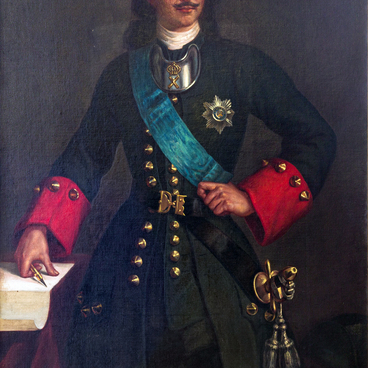Tambov was built by decree of Tsar Mikhail Feodorovich as a fortress city that protected the southern borders of the Grand Duchy of Moscow from nomads. The city and surrounding villages regularly suffered from raids of the steppe dwellers, who ravaged and overrun the locals.
Years after the founding of the city, the residents turned to the tsar for help. Alexey Mikhaylovich (the Quietest) heeded the plea, and in 1648, by his decree, Prince Ivan Ivanovich Romodanovsky went to Tambov. Under the prince’s leadership, residents of seven cities engaged in the construction of a defensive rampart that stretched from the Tsna River (a tributary of the Moksha River, near the village of Kuzmino-Gat) through the forest on the Tatar side almost to the Lipovitsa River. Further, the shaft rose to the northwest along the current and up to the upper reaches of this river and the Studenets River — and ended at the Chelnovaya River. Defense towers were erected along the entire length of this grandiose 20-verst-long (approx. 21 km) embankment. The towers had bells and sentries made up of peasants from the city of Tambov in the Pokrovskaya Sloboda (a type of settlement).
During the reign of Alexei Mikhailovich, many pagans from Mordovia lived in the north of the Tambov-Shatsky Region. Taking care to ensure that “there would be peace and quiet and grace for all Christians” throughout his domain, the tsar sent Misail, the Archbishop of Ryazan and Murom, to these lands. Having converted many to Orthodoxy, the archbishop’s missionary service ended with him suffering a martyr’s death at the hands of the pagans.
The creator of the engraving presented in the exhibition is Christian Albert (Albrecht) Wortmann. He was born in Pomerania in 1680 and studied engraving in Berlin under Johann Georg Wolfgang, in 1710–1720 he served at the court of the Hesse-Homburg Landgrave, and then in Leipzig and Dresden.
In 1728, Wortmann came to St. Petersburg at the invitation of the Secretary of the Academy of Sciences, Ivan Danilovich Schumacher, as an already recognized professional. There he contributed to the establishment of the Engraving Chamber and became its head. In the third year of service the master was deprived of his salary “for many festivities”, however, he was not refused work for hire. In 1735, the Academy of Sciences signed a new contract with the engraver and entrusted him with the training of talented Russian engravers, among whom were Ivan Sokolov (the future head of the Engraving Chamber), Philipp Mattarnovi, Grigory Kachalov, Efim Vinogradov, Alexei Grekov.
Christian Albert Wortmann became famous as an etcher and engraver, illustrator and portraitist. During his Russian period, he created two dozen engraved sheets, including more than ten portraits. Most of them were etched with a burin on an etching plate. The stipple engraving technique was used for modeling hands and faces.

